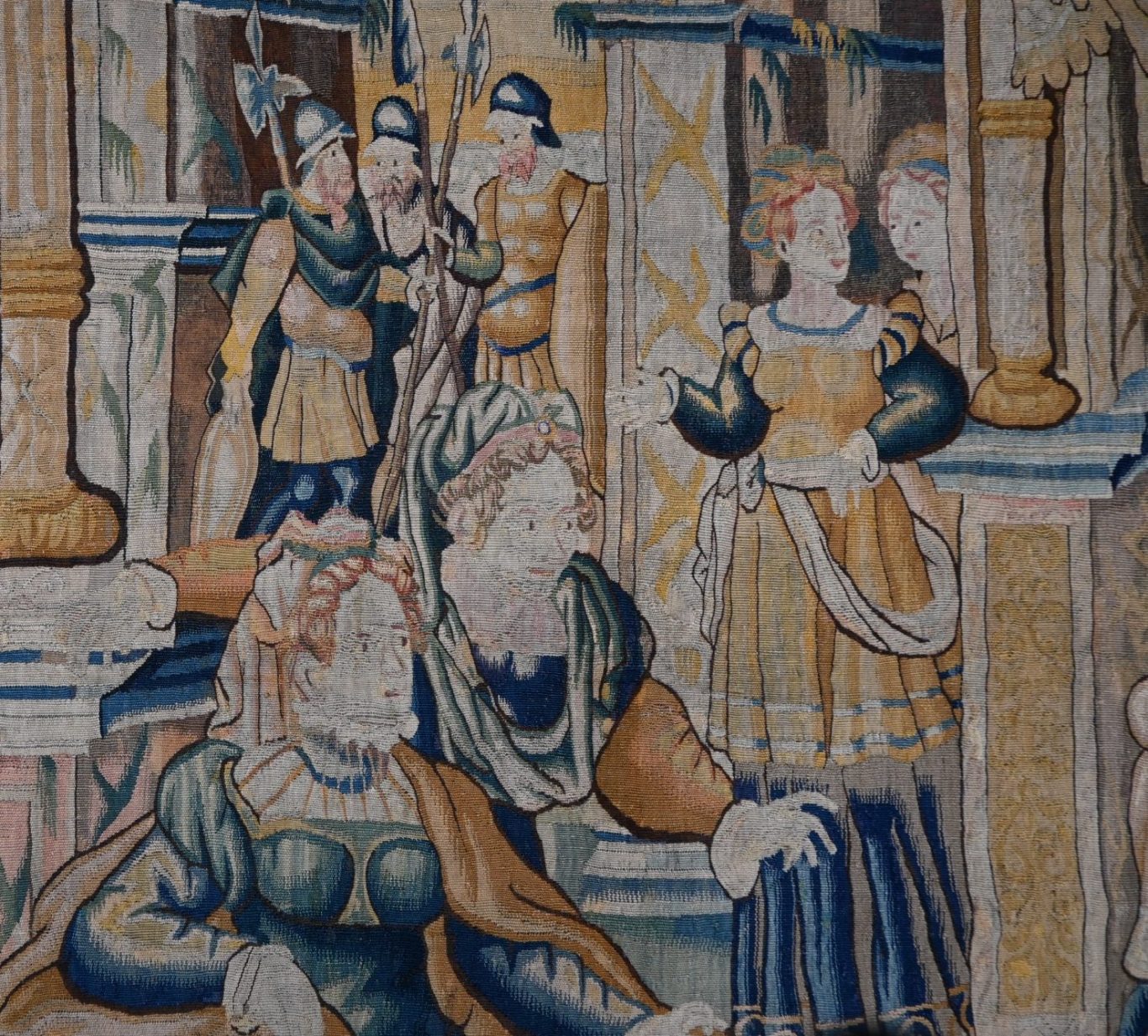Hand-Woven French & Flemish Gobelins Tapestry

Hand-Woven Gobelins Tapestry in French Flemish Style
For centuries, tapestry has been one of the most prestigious forms of textile art in Europe. Among the most celebrated names stand the Manufacture des Gobelins in Paris, the workshops of Aubusson in central France, and the famous weaving centers of Brussels and Oudenaarde in Flanders (Flemish Belgium). Each of these historic schools of weaving contributed to the extraordinary reputation of European hand-woven tapestries, combining craftsmanship, artistry, and cultural heritage.
The Legacy of Gobelins Tapestries
The Gobelins Manufactory, established in the 17th century under the patronage of King Louis XIV and his minister Colbert, became the royal workshop dedicated to furnishing the palaces of Versailles and other residences of the French crown. These hand-woven French Gobelins tapestries were designed by the greatest artists of the age, including Charles Le Brun. Richly colored, monumental in size, and often depicting mythological or historical scenes, Gobelins tapestries were symbols of absolute power and refined taste. Today, the Gobelins Manufacture continues its work, preserving techniques that date back over three centuries while adapting them to modern commissions.
Aubusson – A Six-Century Tradition
Further south in France, Aubusson developed its own identity as a tapestry center from the Middle Ages. Recognized by UNESCO as part of the Intangible Cultural Heritage of Humanity, Aubusson is renowned for its soft wools, delicate shading, and landscapes filled with verdure, animals, and romantic scenes. Unlike the royal Gobelins, Aubusson workshops served noble families, merchants, and wealthy collectors throughout Europe. Their hand-woven Aubusson tapestries are still prized for their elegance, subtle colors, and versatility in interior decoration. Today, Aubusson remains a vibrant hub of weaving, where artisans continue to blend centuries-old techniques with contemporary artistic visions.
Flemish Mastery: Brussels and Oudenaarde
In parallel to France, the Flemish cities of Brussels and Oudenaarde became dominant forces in tapestry weaving from the 15th to the 17th centuries. Brussels workshops, in particular, were famous for their technical perfection and the richness of their silk and gold threads. Kings and popes commissioned Flemish tapestries to decorate palaces and cathedrals, making them highly sought after across Europe.
Oudenaarde, in Flanders, specialized in smaller yet highly detailed pieces, often with intricate borders, floral motifs, and heraldic symbols. Flemish weavers were also pioneers in developing complex weaving techniques that influenced both French and Italian tapestry makers. The phrase “Flemish Tapestry” quickly became synonymous with durability, sophistication, and artistic brilliance.
Brussels in Belgium – A Living Tradition
While the height of Brussels tapestry production belongs to the Renaissance and Baroque periods, the city remains strongly associated with the tradition. Many surviving masterpieces in European museums, including the Vatican and the Louvre, come from Brussels workshops. Collectors today still treasure these works for their extraordinary preservation of color and detail, as well as for their historical importance in representing European cultural exchange.
A Shared European Heritage
Whether woven in Gobelins, Aubusson, Brussels, or Oudenaarde, hand-woven French and Flemish tapestries represent more than decoration. They are living testaments to the interplay between art, history, and craftsmanship. Every tapestry required months, sometimes years, of work at the loom, with artisans translating the painter’s cartoon into textile masterpieces. The richness of the wool, the brilliance of natural dyes, and the precision of weaving techniques combined to create artworks that could rival painting and sculpture.
Today, these tapestries continue to inspire collectors, decorators, and historians. Their ability to transform a room with elegance and warmth remains unmatched. Owning a hand-woven French or Flemish tapestry is not only a matter of style but also of preserving a piece of Europe’s artistic and cultural history.